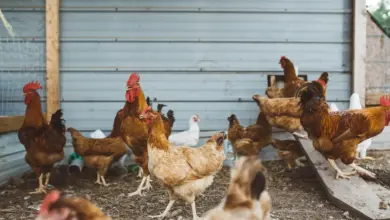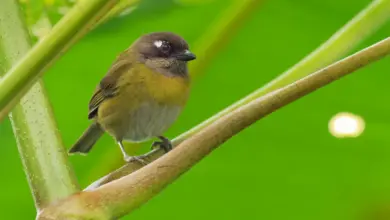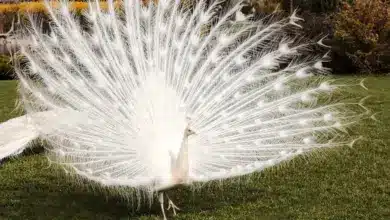Dark-Eyed Junco Habitat & Range: Where Are They Found?
In this article, we look at dark-eyed junco habitat and range, a mind-bogglingly complex question because of the large number of subspecies of these birds. We will try to simplify the answer for you.
The black-eyed junco (Junco hyemalis) is an iconic sparrow-like bird found across Canada and the United States.
It is not so well-known because of its rarity or fancy plumage – instead, it’s because the Dark-eyed junco is one of the most common birds in North America.
Estimations are that there are around 630 million individuals of these abundant forest birds out there!

Two centuries ago, John James Audubon, the first American ornithologist, wrote, “There is not an individual in the Union who does not know the little Snowbird.“
Their prominent presence in the wintertime earned them the nickname Audubon used – “the snowbirds.”
However, if you observe a junco flock, especially during the cold season, you may see differently colored individual birds.
Also, you may see different-looking juncos in residential state and your home state, for example. Let’s discover the secrets of junco subspecies and their distribution.
Dark-Eyed Junco Habitat
Although there are many variations depending on the subspecies (as you’ll learn a bit below), typically, these birds breed in northern regions of the US and Canada during summer and late spring, reaching the Arctic.
This territory is their seasonal breeding habitat.
During this season, the dark-eyed juncos are found almost exclusively in conifer and mixed forests consisting of spruces, pines, and hardwood mixes.
They prefer open types of woodland rather than dense forests – because they forage and nest close to the ground (or on the ground), they like to have floor space.

However, these native birds change their preferred habitats as the winter approaches.
In the fall and winter, these birds can be more commonly found foraging in forest edges and shrublands rather than deeper woods.
Also, they fly into suburban and urban environments, providing these locations have sufficient shrubs or other low vegetation to shelter them and food (seed) sources, natural or from feeders.
“Snowbirds” can be observed in farmlands, parks, and backyards.
Depending on the population, juncos can also migrate, which brings us to our next topic.
Where Are Dark-Eyed Juncos Found
The black-eyed juncos are either residents (stay within the same range throughout the year) or medium-distance migrants.
The migrations happen as the winter approaches due to the food availability being low on their breeding grounds.
For example, dark-eyed juncos with breeding grounds in Canada and Alaska migrate to the US south for the winter – and those are the longest Junco migration routes.
On the other hand, Rocky Mountains populations are defined as short-distance migrants and might only switch states for the winter.
Finally, some populations, as well as individual birds in the Appalachians, are not migratory birds.
Dark-Eyed Junco Range
Now that you got the basics of dark-eyed junco habitat preferences and distribution, it’s time for things to get complicated.
Not because I want them to be, but because they are, and for one simple reason – all the dark-eyed junco subspecies that all have a specific range.
When talking about the junco range, it is important to differentiate between two things – the breeding range and the wintering range.
In migrating dark-eyed juncos, these two ranges differ.
The most common junco group, the Slate-colored Junco, nests from Alaska in the northwest, across Canada, to Southern Labrador and Northern Newfoundland in the east.

The northeastern US and Appalachian mountains are the breeding range’s southern end.
Other junco groups and subspecies have a more western and southern-oriented distribution and breed from southwestern Canada through the Western United States and all the way to Southern California.
In the winter, “snowbirds” start acting true to their nickname.
The migrating northern populations from Canada and the Northern US flock to the entire territory of the United States and northern Mexico, with the rare exceptions of some regions such as the Florida peninsula (but they still can be found in the north of the state).
Dark Eyed Junco Range Map

Dark-Eyed Juncos is a mostly resident species. If at all they migrate, it is shorter distances. The populations that breed in Canada and Alaska migrate south to survive the harsh winter months.
Some juncos in the Rocky Mountains migrate relatively short distances. While others in the east and the Appalachians stay year-round and do not migrate.
Dark-Eyed Junco Subspecies Distribution
To get the dark-eyed junco distribution entirely right, we need to look at the groups and subspecies of this complex taxon.
Brace yourself – classifying all the black-eyed junco subtypes is no simple matter.
The difference between junco types is superficially so stark that scientists used to think there were five separate species.
However, after a thorough study, the verdict was that all of these varying juncos, in fact, belong to one species – Junco hyemalis.
Because of the variety, the subspecies are included in the Dark-eyed junco complex or Dark-eyed junco group.
Generally, the continent’s West has a greater array of junco subspecies than the East, dominated by the slate-colored junco group.

Slate-colored Junco Group Distribution
Slate-colored Junco is the most widespread type and, one could argue, a junco “archetype.”
The male has a gray head, chest, back, and wings. The head is sometimes darker than the rest of the body) and a bright white belly.
Also, there are distinct white outer tail feathers that the male flashes during courtship. Females have the same color pattern but are essentially brown birds rather than steel gray.
This subspecies is found across Canada and the United States, either breeding or wintering.
The slate colored-junco has two main variations.
- Slate-colored Junco (Junco hyemalis hyemalis) – the most widespread subspecies of the dark-eyed junco complex.
- Appalachian Junco (Junco hyemalis carolinensis) – has a distinct white underside; the name suggests you can encounter it mostly in the Appalachian mountains.
The Cassiar junco is also sometimes classified within the slate-colored junco group.
Oregon Junco Distribution
With the recognizable black hood and additional colors such as red and pink (depending on the subspecies),
Oregon junco (Junco hyemalis oreganus) is the second best-known group and a “typical junco” for people residing in the American West. Also, it is the group with the greatest number of variations.

Certain variations within the subspecies form the Oregon junco group.
- Gray-headed Junco (Junco hyemalis caniceps) – this subspecies is mostly found in the Rockies and southwest US, all the way to Mexico.
- Pink-sided Junco (Junco hyemalis mearnsi) is also found in the Rockies.
- Red-backed Junco (Junco hyemalis dorsalis) – you can encounter this showy bird primarily in Central Arizona and New Mexico. If you don’t look close enough, the red-backed junco can look a lot like the yellow-eyed junco (Junco phaeonotus), a separate species with a distinct yellow eye.
- White-winged Junco (Junco hyemalis aikeni) – found from southeast Montana to South Dakota and from northeast Wyoming to northwest Nebraska. It breeds in the Black Hills of Dakota and also winters in Colorado.
Cassiar Junco Distribution
Cassiar Junco or Rocky Mountain junco (Junco hyemalis cismontanus) is the rarest and poorly understood junco subspecies.
It has a breeding range from central Yukon south to northern BC and central Alberta (Canada), at least according to literature; however, there are many mysteries regarding its real range.
Also, according to some sources, it is considered a mere hybrid of slate-colored and Oregon subspecies and not a distinct junco race.
Guadalupe Junco Distribution
Guadalupe junco (Junco hyemalis insularis) is unique – the only subspecies of its Guadalupe Junco group.
Its natural range is (surprise!) Guadalupe Island off Baja California.
Once thought to be a separate species (J. insularis), it is now definitely classified as a dark-eyed junco subspecies.

Dark Eyed Junco Distribution By State – Examples
Let’s have a quick overview of how juncos are distributed in some states to give you a realistic sense of all the regional variations in Dark Eyed Junco distributions.
Dark Eyed Junco Colorado
The gray-headed junco is the only subspecies that calls Colorado true home since it is the only variation breeding in the state.
However, all variations except the red-backed junco can be observed in Colorado in the wintertime. They usually nest in nearby states.
The white-winged Dark Eyed Junco, for example, winters specifically in the Rockies and across the Great Plains in Colorado and nests in the Black Hills of Dakota.
The mysterious Cassiar junco can also be encountered in some regions of Colorado during the whiter.
Dark Eyed Junco Maryland
Maryland is a winter home to the slate-colored junco, which is typical for the East Coast.
The subspecies Appalaichan Junco (Junco hyemalis carolinensis) can be encountered in the Appalachian region.
Juncos mainly live in Maryland from October to April, but some of them have the status of permanent residents. Interestingly, they are reported in 40% of the state’s winter checklists!
Some juncos that live in the Appalachians, including parts of Maryland’s Garrett County, don’t migrate and are year-round residents.
Also, you can probably spot the Oregon junco from time to time, as well as other subspecies.

Dark-Eyed Junco Pennsylvania
As a northeastern state, Pennsylvania is also dominated by the Slate-colored junco. Oregon junco appears during the wintertime, although rarely.
Dark Eyed Junco Texas
The only junco subspecies that breeds in Texas is the Red-backed Junco (J. h. dorsalis).
They reside in the Trans-Pecos region; the only breeding locality in the state are the Guadalupe Mountains’ pine-Douglas fir forests, from 2100 to 2650 m (7000 to 8700 ft) in elevation.
The breeding season lasts from mid-April to mid-August.
However, all other junco forms overwinter in Texas, from early September till the end of May, with numbers peaking from mid-October to mid-April.
The Slate-colored Junco is commonly observed in the eastern parts of the state, while the Oregon and Gray-headed juncos are usually encountered in the western half.
Dark-Eyed Junco Europe Distribution
There are no Dark Eyed juncos habitat native to Europe – it is a strictly New World species.
However, there have been “accidental” encounters in Germany, the Netherlands, Belgium, Norway, the United Kingdom, and some also note in Ireland and Italy as well.
How exactly these curious birds got this far – we will probably never know.
Frequently Asked Questions
Where does the Dark-eyed Junco live?
Such forests are also habitats where they nest and breed during the warm part of the year – the breeding season.
Interestingly, they predominantly nest not on the trees but on the forest floor.
However, during the winter, they get closer to humans and can be seen in parks, suburban yards, gardens, and farmlands.
They love gathering on (and below) birdfeeders too.
Where do juncos live in the winter?
That is also the time they gather in flocks that can number up to 30 individuals, sometimes mixed with other sparrow-like species.
What does it mean if you see a Dark-eyed Junco?
How do you attract juncos to your yard?
First, install a bird feeder and load it up regularly with a bird feeder mix rich with millet and sunflower seeds.
Second, plant native shrubs, grasses, and other plants attractive to juncos.
They like plants that will provide them with cover (shrubs) and grasses that will provide cover plus a natural food source.
Wild grasses of the genera Panicum, Bouteloua, Andropogon, and Sorghastrum are highly suited to the palate of juncos and similar sparrow-like birds.
Wrap Up
Hopefully, the complex question of dark-eyed junco distribution is now clearer.
Depending on the season and your location, you are now equipped to figure out what juncos to expect in your area.
If you are an avid birdwatcher, I know you’ll be tempted, but take my advice and don’t beat yourself up about always determining the exact subspecies when enjoying the sight of a junco flock.
As if all these divisions weren’t enough, junco subspecies hybridize – cross-breed with each other – and create a progeny that is something in between and often difficult to classify.
The more, the merrier!
Still, no matter what subspecies they belong to, dark-eyed junco is an excellent bird to observe and a true North American wintertime jewel.
Thank you for reading!




